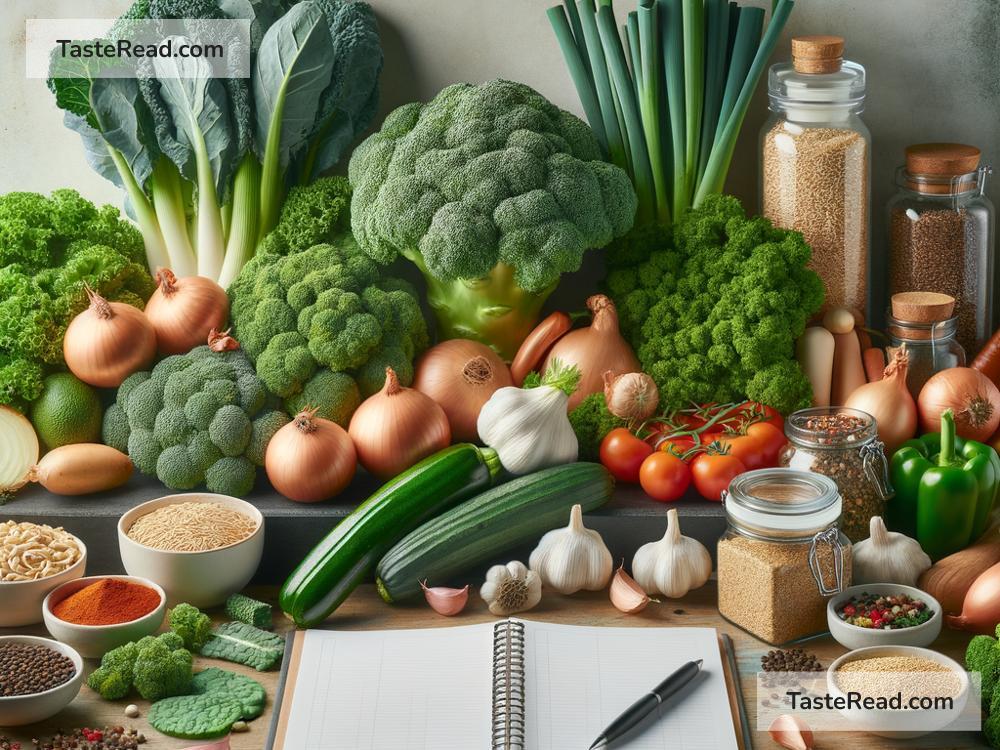How to Plan Meals for Optimal Phytoalexin Intake
If you’ve been exploring the world of healthy eating, you may have heard the term “phytoalexins” pop up. It sounds like something straight out of a science textbook, but these natural compounds can have powerful effects on our health. Phytoalexins are substances produced by plants in response to stress, such as infections or injuries, acting like their natural immune defense system. When humans consume these compounds, they may boost our health by offering antioxidant, anti-inflammatory, and even anti-cancer benefits.
In this article, we’ll explore how to plan your meals for optimal phytoalexin intake while keeping it simple and practical.
What Are Phytoalexins?
Let’s break this down. Phytoalexins are plant-based compounds produced as a defense mechanism against pathogens (like bacteria or fungi) or stress. Examples include resveratrol (found in grapes), glucosinolates (in broccoli and other cruciferous vegetables), and allicin (in garlic). These compounds not only help plants survive but can also benefit human health when we eat phytoalexin-rich foods.
By adding these foods to your diet, you harness the power of plants’ defenses to support your immune system, maintain healthy cells, and fight oxidative stress.
Why Focus on Phytoalexins?
Phytoalexins are a major reason why a diet rich in fruits and vegetables is good for you. Research shows that these compounds may:
1. Support Immunity: They help your body fight infections and reduce inflammation.
2. Protect Against Chronic Diseases: Many phytoalexins are linked to lower risk of conditions like heart disease and cancer.
3. Aid in Longevity: Certain compounds, such as resveratrol, have been associated with cellular repair and anti-aging effects.
Now that we know how beneficial phytoalexins can be, let’s look at how to optimize your meals to get more of them.
Step-by-Step Plan for Optimal Phytoalexin Intake
Step 1: Include a Variety of Vegetables
Phytoalexins are found in many types of vegetables, but cruciferous vegetables like broccoli, kale, cauliflower, and Brussels sprouts are top stars. They’re rich in glucosinolates, which have been linked to cancer prevention and overall cell health.
When planning your meals, try to include at least one cruciferous vegetable every day. For example:
– Add steamed broccoli to your lunch.
– Include kale in your morning smoothie.
– Roast some cauliflower for a delicious side dish.
Step 2: Embrace Garlic and Onions
Garlic and onions contain allicin, one of the most well-known phytoalexins with antimicrobial and heart-protective properties. The trick is to chop garlic or onion and let it sit for 10–15 minutes before cooking or eating, as this process activates the allicin.
– Stir chopped garlic into soups, sauces, or stir-fries.
– Roast garlic and spread it on whole-grain bread for a healthier alternative to butter.
Step 3: Load Up on Colorful Fruits
Brightly colored fruits are often rich in phytoalexins. Grapes, berries, and cherries contain resveratrol, quercetin, and anthocyanins—compounds that help protect your cells and boost heart health.
– Snack on a handful of blueberries.
– Make desserts with cherries or grapes.
– Mix fruits into a salad for a refreshing and nutrient-packed meal.
Step 4: Fermented Foods for an Extra Boost
Phytoalexins in certain foods—like cabbage—can be enhanced through fermentation. When cabbage is fermented into kimchi or sauerkraut, it becomes even more robust in its health benefits.
– Add kimchi as a side to your meals.
– Top a sandwich with sauerkraut for extra flavor and nutrition.
Step 5: Opt for Whole Grains and Legumes
Foods like quinoa, oats, lentils, and chickpeas contain phytoalexins like saponins, which have antioxidant and anti-inflammatory properties.
– Use quinoa as the base for a veggie-packed salad.
– Enjoy lentil soup as a hearty and nutritious lunch.
Step 6: Choose Quality Over Quantity
Organic, locally grown vegetables and fruits often contain higher levels of phytoalexins because they face more natural stress conditions compared to conventional produce. Whenever possible, try to buy fresh and organic produce.
Meal Planning Tips
- Plan Ahead: Set aside time each week to plan your meals, ensuring you include phytoalexin-rich foods in each meal.
- Rotate Foods: Different plants contain different phytoalexins, so mix up your food choices regularly.
- Pair Smart: Pair phytoalexin-rich foods with healthy fats like olive oil or avocado to increase nutrient absorption (e.g., drizzle olive oil over steamed broccoli).
- Batch Cook: Make soups, stir-fries, and casseroles that include garlic, cruciferous vegetables, and legumes that can be eaten over a few days.
Sample Day of Phytoalexin-Rich Meals
- Breakfast: A smoothie with kale, blueberries, and a touch of almond butter.
- Lunch: Quinoa salad with roasted cauliflower, chickpeas, and olive oil dressing.
- Dinner: Stir-fried tofu with garlic, onions, and broccoli, served with brown rice.
- Snack: Grapes or a small handful of walnuts paired with green tea.
Key Takeaways
Phytoalexins are natural plant compounds with profound health benefits. By planning meals rich in cruciferous veggies, garlic, colorful fruits, fermented foods, and whole grains, you can maximize your intake of these powerful compounds. Keep your meals varied, colorful, and full of whole, fresh ingredients.
Eating for optimal phytoalexin intake doesn’t require fancy recipes or expensive foods. It’s about choosing diverse, nutrient-packed produce and integrating them into your daily meals. Start small, build smart habits, and enjoy the rewards of vibrant health over time!


